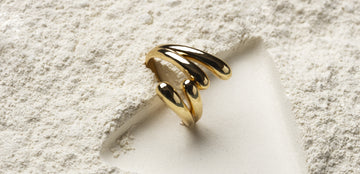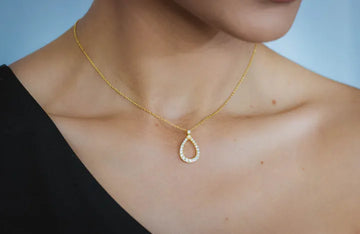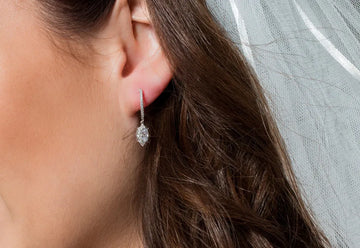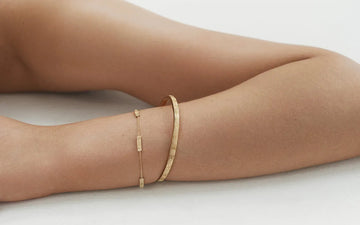Profit, Conversion Balance

Effective Jewellery Pricing Strategy to Achieve Success
Running a jewellery business involves many things, from designing pieces to marketing and fulfilling orders. But setting the correct prices is essential for success.
Pricing strategies are vital for any business, especially in jewellery retail. It's about balancing production costs, market demand, and how customers perceive your brand's value.
It also influences how customers see your brand's value, which impacts their buying decisions. A good strategy ensures your prices are competitive while still making you a profit.
In a competitive market, a well-planned pricing strategy can significantly boost sales and profitability.
Many businesses offer a half-price jewellery sale to attract new customers. You can also find factory-priced jewellery if you source it directly from manufacturers.
Key Insights on Pricing Strategy
A good pricing strategy ensures profitability while appealing to customers. Creating an effective pricing strategy involves considering several business factors.
Pricing jewellery efficiently is critical for business growth. Here are significant things to consider when determining jewellery prices:
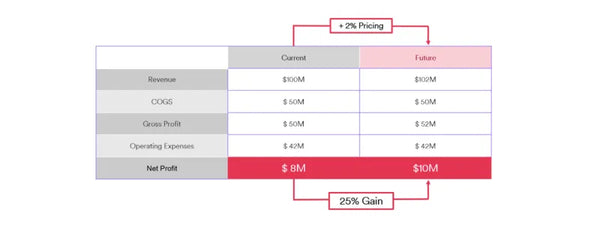
Calculate production costs:
First, calculate the cost of making your jewellery. This comprises materials, labour, packaging, and overhead costs (rent, utilities, etc.). Your total cost will vary based on your business structure and manufacturing partners.
Knowing your production costs allows you to avoid selling at a loss and instead focus on optimising profits. You might find factory-price jewellery by cutting out the middleman and dealing directly with manufacturers.
Research the Market:
Research your competitors' prices for similar items. This will give you an idea of what price range to aim for and help you understand what clients expect.
You can measure how valuable your items seem to them. You can also find ways to stand out. Knowing what your competitors charge can help you find ways to gain an edge.
You might offer lower prices, bundles, or extra features. If you are selling gold jewellery, it is important to know how to calculate price of gold jewellery to set the right prices.
Monitor Customer Demand:
You must pay attention to how customers react when you change prices. By doing so, you can locate the optimal point at which demand remains high.
Consider seasonal patterns:
Jewellery sales often vary with seasons. For instance, summer jewellery may not sell much in winter. Make sure that your prices are in line with the seasonal demand.
You might consider having a half-price jewellery sale to clear out end-of-season stock.
Consider Dynamic Pricing:
One option to consider is dynamic pricing, which changes rates in response to customer demand. You can, for instance, charge more when demand is high and less when it's low.
This helps with price optimisation and profit maximisation.
Incorporate Psychological Pricing:
Many people find that pricing with odd numbers, such as $19.99 or $29.99, is more enticing. This strategy can attract more consumers.
Monitor Your Prices:
After setting your pricing, you should check in with yourself frequently to ensure they are still bringing in enough money.
Consider automating this process using pricing software to remain ahead of the competition and maximise your budget.

Price Monitoring Tools (source: Freepik)
Crafting Unique Selling Propositions (USPs)
Every retail business, including jewellery brands, needs unique selling propositions (USPs). In today's competitive market, USPs are essential for survival.
A USP, or Unique Selling Proposition, shows what makes your business stand out from others. USP explains why your products are valuable, worth buying, and superior to others on the market.
Why Jewellery Brands Need USPs
Customers can choose from a wide variety of different brands of jewellery. You will need to offer them something unique to persuade them that your option is superior.
For example, you sell gold jewellery at wholesale prices and you have better prices than others. In that case, a unique selling proposition (USP) like "Australia's best wholesale gold jewellery supplier" could attract more customers. This could be especially appealing to those looking for factory-price jewellery.
Advantages of a good USP include the following:
Clear Differentiation:
In a very competitive market, you need to stand out. Unique selling propositions (USPs) help differentiate your brand, which in return attracts more customers.
Targeting a specific demographic is possible when you specialise in a particular field, such as wholesale jewels.
Improved Sales:
USPs that address customer needs and desires drive sales. When your USP resonates with potential buyers, they're more likely to invest in your brand, boosting revenue.
A half-price jewellery sale is a great way to generate initial interest and boost sales.
Customer Loyalty:
Continuously promoting and modifying a strong USP leads to increased consumer loyalty.
As customer preferences change, maintaining your unique selling proposition ensures you continue satisfying their demands.
Streamlined Selling:
USPs establish a strong brand identity. Highlighting your distinct strengths allows you to target certain audiences and personalise your communication to their needs.
This streamlined strategy is critical to corporate success.
Final Thoughts
An efficient jewellery pricing plan balances costs, consumer expectations, and market trends. By concentrating on these elements, you can optimise your pricing and develop a profitable business.
To become a more successful brand, explaining your USPs clearly and efficiently is essential. So that clients understand what your brand provides and how it benefits them.
